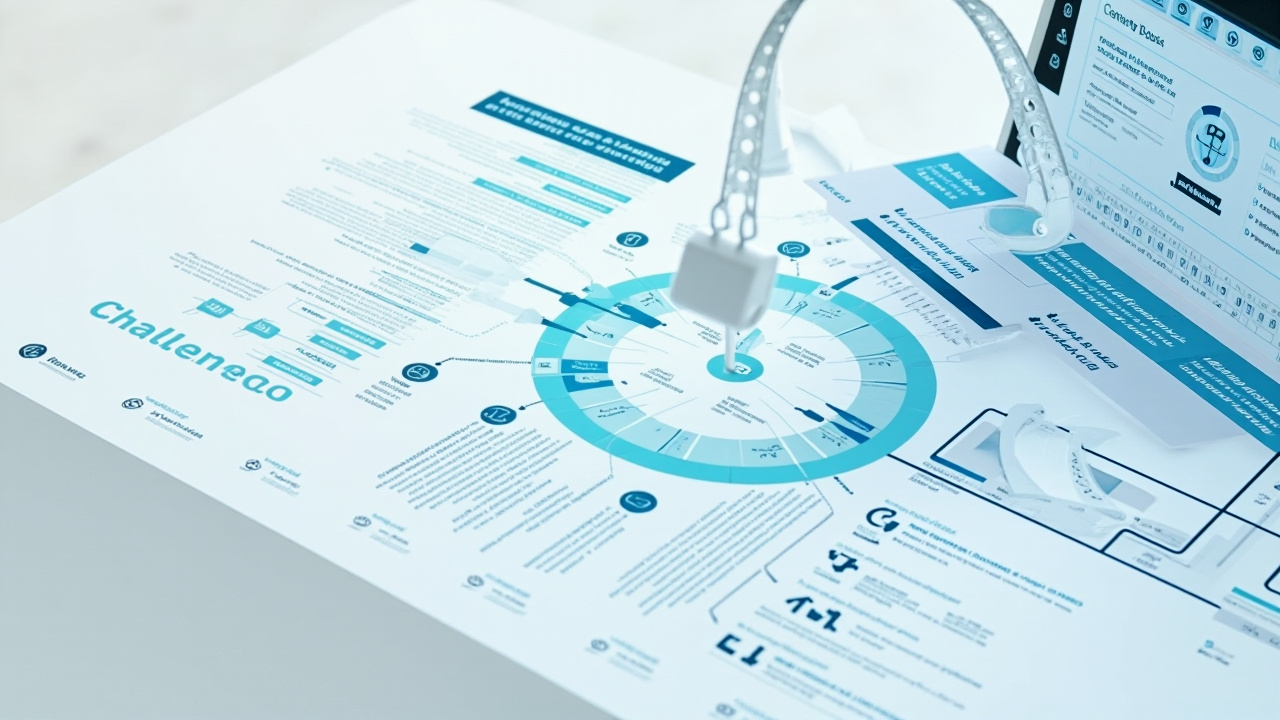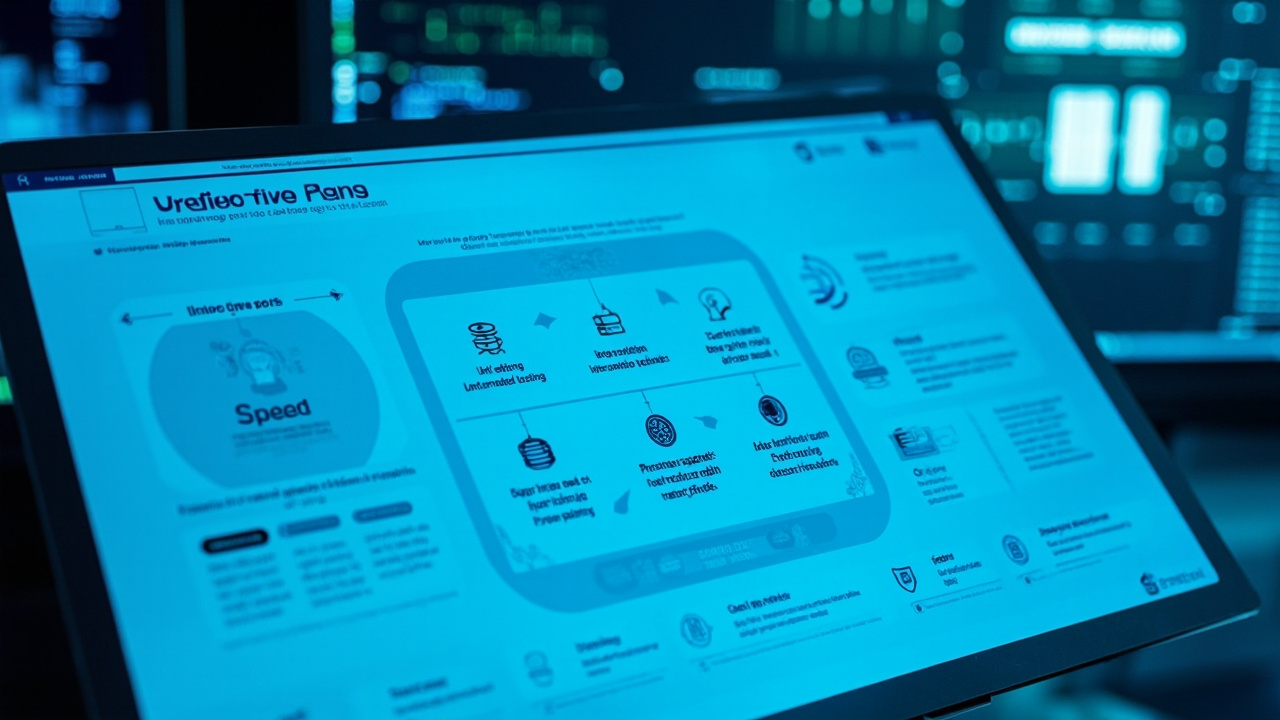In the evolving landscape of software development, the stakes have never been higher. As companies race to deliver innovative solutions, the demand for robust, reliable, and high-quality software has become paramount. This journey through the world of software testing will explore the challenges faced by modern teams, the evolving methodologies, and the tools that are reshaping the way we ensure software quality.
Testing isn’t just about finding bugs anymore it’s about ensuring that applications not only work but excel in delivering seamless user experiences across platforms. As we delve into the intricacies of software testing, we’ll uncover how tools like GenQE, an AI-powered software quality engineering platform, are leading the charge in transforming testing practices.
But why does software testing matter so much? In a world where digital transformations are reshaping every industry, the quality of software can make or break a company’s reputation. Inadequate testing can lead to security vulnerabilities, poor user experiences, and ultimately, financial losses. This article is your guide to understanding not just the importance of software testing, but how to do it smarter, faster, and more effectively.
The Evolution of Software Testing: From Manual to Automated

The journey of software testing has been a fascinating one. From the early days, when testing was a manual and labor-intensive task, to today’s automated and AI-driven processes, the evolution is remarkable.
From Manual Labor to Automation
In the early stages of software development, testing was a completely manual process. Testers would execute a series of pre-defined steps, document the results, and report any issues. This method was time-consuming and prone to human error. As software complexity increased, the limitations of manual testing became glaringly evident.
The introduction of automation tools marked a significant shift. Automated testing allowed for repetitive tasks to be executed without human intervention, drastically reducing the time and effort required. However, initial automation efforts were not without challenges. They required significant upfront investment in scripting and were often brittle, breaking with minor changes in the application.
The Role of AI in Modern Testing
Today, artificial intelligence is pushing the boundaries of what is possible in software testing. AI-driven tools like GenQE are not just automating tests but are making the entire process smarter. By analyzing historical data, user behavior, and software requirements, AI can generate test cases that are both comprehensive and focused on high-risk areas.
“The future of testing is not just automated but intelligent.”
AI’s ability to adapt and learn from data means that testing processes can now keep up with the fast-paced nature of modern software development. This evolution from manual to automated, and now to AI-driven testing, highlights the continuous progress in the field.
Benefits of the Evolution
The evolution of testing methodologies brings several benefits. Faster execution times, increased test coverage, and improved accuracy are just the tip of the iceberg. With tools like GenQE, teams can focus their efforts on innovation rather than mundane testing tasks. Moreover, the ability to predict potential defects before they occur is a game-changer, preventing costly production issues.
As we move forward, it’s crucial to understand that the evolution of software testing is not just about technology but about improving the quality and reliability of software products. The next section will delve into the specific challenges faced by testing teams today and how they can overcome them.
Navigating the Challenges of Modern Software Testing

Despite technological advances, software testing teams face a myriad of challenges. Understanding these challenges is the first step towards crafting effective solutions.
Complexity and Speed
Today’s software applications are more complex than ever before. From intricate backend operations to seamless user interfaces, ensuring quality across the entire stack is daunting. Additionally, the pressure to deliver software quickly has never been more intense. Agile methodologies and continuous delivery practices demand rapid testing cycles, leaving little room for error.
Ensuring Comprehensive Coverage
One of the biggest challenges is ensuring comprehensive test coverage. With applications running across multiple platforms, devices, and operating systems, the risk of missing critical defects is high. Traditional testing methods struggle to keep up with this level of complexity, often resulting in gaps that only surface post-deployment.
“Comprehensive testing is not just desirable it’s essential.”
Balancing Quality and Speed
In the rush to deliver features, there is often a trade-off between speed and quality. Testing teams must balance the need for thorough testing with the demands of fast-paced development cycles. This often leads to a dilemma: how much testing is enough?
Overcoming the Challenges
Addressing these challenges requires a strategic approach. Leveraging AI-driven tools like GenQE can significantly ease the burden. By automating test generation and execution, teams can achieve faster and more accurate results. GenQE’s ability to prioritize test cases based on risk ensures that critical areas are tested first, aligning with the need for rapid yet thorough testing.
Moreover, self-healing test automation a feature of GenQE reduces maintenance efforts by automatically adjusting to changes in the application. This not only saves time but also ensures that test scripts remain robust and reliable.
The next section will explore the various methodologies that teams can adopt to enhance their testing practices and ensure software quality.
Embracing Agile and DevOps: Transforming Testing Practices

Agile and DevOps have revolutionized software development, and testing practices have had to adapt accordingly. These methodologies prioritize collaboration, integration, and continuous improvement principles that are essential for effective testing.
Agile Testing: A Collaborative Approach
Agile testing integrates testing into the development process rather than treating it as a separate phase. This approach involves continuous feedback and collaboration between developers, testers, and stakeholders. By embedding testing into the development cycle, issues can be identified and addressed early, reducing the risk of costly fixes later.
Agile testing emphasizes flexibility and adaptability, allowing teams to respond quickly to changes. This is where tools like GenQE shine. With its seamless integration into DevOps pipelines and CI/CD tools, GenQE ensures that automated testing is a natural part of the development process.
DevOps and Continuous Testing
DevOps extends the principles of Agile by fostering a culture of collaboration between development and operations teams. One of the cornerstones of DevOps is continuous testing running automated tests at every stage of the development pipeline.
“In DevOps, testing is not a phase; it’s a continuous process.”
Continuous testing ensures that defects are caught early, facilitating faster and more reliable releases. GenQE’s integration capabilities with popular tools like Jenkins and GitHub Actions make it an ideal choice for teams adopting a DevOps approach. Its AI-powered defect detection enhances the reliability of continuous testing efforts.
Benefits of Agile and DevOps Testing
Adopting Agile and DevOps testing practices offers several benefits. Faster feedback loops, improved collaboration, and higher-quality software are just a few. By aligning testing with development and operations, teams can achieve a more seamless and efficient workflow.
In the following section, we’ll delve into the role of automation in modern testing practices and how teams can leverage it to ensure quality at scale.
Automation: The Backbone of Efficient Testing

Automation plays a pivotal role in modern software testing. It allows teams to execute repetitive tasks with precision, freeing up resources for more strategic activities.
The Power of Automated Testing
Automated testing is not new, but its importance has grown significantly. By automating repetitive tasks, teams can achieve faster test execution, increased coverage, and reduced human error. This is crucial in today’s fast-paced environment where time-to-market is critical.
However, automation is not a silver bullet. It requires careful planning and execution. Tests must be well-designed and maintained to provide value. This is where GenQE’s self-healing automation capabilities are invaluable. By automatically adjusting test scripts to changes in the application, GenQE reduces the maintenance burden and ensures that tests remain effective.
Types of Automated Testing
There are several types of automated testing, each with its own applications and benefits
- Unit Testing: Focuses on testing individual components or functions. It’s typically written by developers and runs quickly, providing immediate feedback.
- Integration Testing: Ensures that different components or systems work together as expected. It’s crucial for identifying issues that may arise from interactions between components.
- Functional Testing: Validates the software against specified requirements. It ensures that the application behaves as expected from the end user’s perspective.
- Performance Testing: Assesses the application’s behavior under load. It helps identify bottlenecks and performance issues that could impact user experience.
“Automation is not just about speed; it’s about precision and reliability.”
Best Practices for Automation
To maximize the benefits of automation, teams should adopt best practices such as
- Prioritizing test cases based on risk and impact. Regularly reviewing and updating test scripts to ensure they remain relevant. Integrating automation into the CI/CD pipeline to ensure continuous testing.
GenQE’s advanced analytics and reporting capabilities provide teams with insights into test performance and trends, enabling data-driven decision-making.
In the next section, we’ll explore the importance of comprehensive test coverage and how teams can achieve it.
Achieving Comprehensive Test Coverage: A Holistic Approach

Ensuring comprehensive test coverage is a critical aspect of software testing. It involves verifying that all parts of the application are tested and that potential defects are identified before they reach production.
The Importance of Test Coverage
Test coverage is a measure of how much of the application is tested. It is not just about the number of test cases, but their quality and the areas they cover. Comprehensive test coverage reduces the risk of defects slipping through and ensures that the application functions as intended across different environments and scenarios.
However, achieving comprehensive coverage is challenging, especially in complex applications with multiple dependencies. This is where tools like GenQE can make a difference. By leveraging AI to analyze software requirements and user behavior, GenQE generates test cases that provide extensive coverage across platforms, including web, mobile, and APIs.
Strategies for Comprehensive Coverage
To achieve comprehensive test coverage, teams should adopt a multi-faceted approach
- Risk-Based Testing: Focus on areas with the highest impact and risk. Prioritize test cases that cover critical functionality and potential failure points.
- Cross-Platform Testing: Ensure that the application works seamlessly across different devices and operating systems. This is particularly important for mobile applications that run on various screen sizes and OS versions.
- End-to-End Testing: Validate the entire application flow, from start to finish. This helps identify issues that may arise from interactions between different components.
“Comprehensive coverage is not about testing everything; it’s about testing the right things.”
The Role of AI in Test Coverage
AI-driven tools like GenQE enhance test coverage by intelligently generating and prioritizing test cases. This ensures that critical areas are tested first, and potential defects are identified early. GenQE’s ability to adapt to changes in the application also ensures that test coverage remains up-to-date.
In the following section, we’ll discuss the future of software testing and the emerging trends that are shaping the industry.
The Future of Software Testing: Emerging Trends and Technologies

The field of software testing is continuously evolving, driven by technological advancements and changing business needs. Staying ahead of emerging trends is crucial for teams looking to improve their testing practices.
AI and Machine Learning
AI and machine learning are at the forefront of the testing revolution. These technologies enable intelligent test generation, execution, and analysis, making testing more efficient and effective. Tools like GenQE leverage AI to enhance test automation, reduce manual effort, and improve software quality.
AI-driven defect detection is another promising area. By identifying patterns in test results, AI can detect anomalies and potential defects early in the development cycle. This proactive approach prevents critical issues from reaching production.
Cloud-Based Testing
As applications increasingly move to the cloud, cloud-based testing is becoming more prevalent. Cloud testing offers several benefits, including scalability, flexibility, and cost-effectiveness. It allows teams to test applications across different environments without the need for extensive infrastructure.
Cloud-based tools also facilitate collaboration and integration with other development tools, supporting DevOps practices. GenQE’s comprehensive test coverage across cloud environments ensures that applications function seamlessly, regardless of where they are deployed.
“The future of testing is in the cloud, where scalability meets flexibility.”
Continuous Integration and Delivery
Continuous integration and delivery (CI/CD) are becoming standard practices in software development. These practices emphasize automation and collaboration, allowing teams to deliver high-quality software quickly and reliably.
Testing is a critical component of CI/CD, ensuring that defects are caught early and that releases are stable. GenQE’s seamless integration with CI/CD tools makes it a valuable asset for teams looking to enhance their testing efforts.
As we look to the future, the key to successful software testing lies in embracing these emerging trends and technologies. By doing so, teams can ensure that they remain competitive and deliver high-quality software that meets the needs of their users.
Conclusion: Embracing the Future of Software Testing

Software testing is a critical aspect of the software development process, ensuring that applications are reliable, secure, and deliver exceptional user experiences. As we’ve explored in this article, the landscape of software testing is changing rapidly, driven by technological advancements and evolving business needs.
The shift from manual to automated testing, the integration of AI and machine learning, and the adoption of Agile and DevOps practices are transforming the way teams approach testing. Tools like GenQE are at the forefront of this transformation, offering innovative solutions that enhance test automation, improve efficiency, and ensure robust software quality.
As we move forward, it’s essential for testing teams to embrace these changes and continuously adapt their practices. By doing so, they can ensure that they deliver high-quality software that meets the needs of their users and supports their organization’s goals.
For those looking to enhance their testing practices, exploring tools like GenQE can provide valuable insights and opportunities for improvement. The future of software testing is bright, and by embracing new technologies and methodologies, teams can ensure that they remain at the forefront of the industry.
“The future of software testing is not just about technology; it’s about delivering quality and excellence.”
Discover More Innovative Solutions
Want to learn more about the tools and technologies discussed in this article? Explore how these innovations can be tailored to your specific needs and workflow requirements.
Our team of experts is available to answer your questions and provide personalized insights into how modern solutions like GenQE can address your specific challenges.
If the link above does not work, please visit: https://calendly.com/dm-csimplifyit/30min?month=2025-05